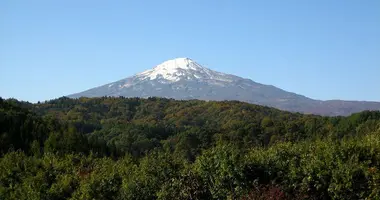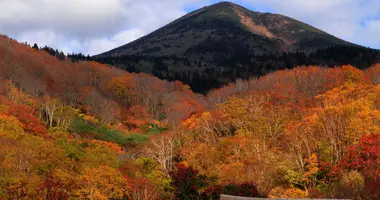Oirase Gorge: A breathtaking natural wonder in Japan
- Published on : 27/05/2024
- by : Japan Experience
- Youtube
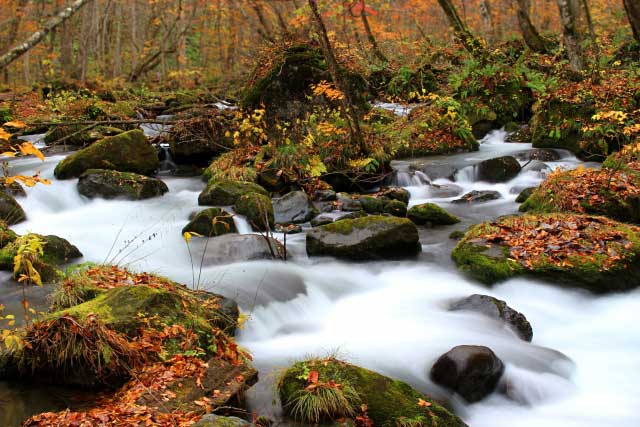
Nestled in the heart of Aomori Prefecture, Oirase Gorge stands as one of Japan's most captivating natural wonders. This picturesque river valley stretches for 14 kilometers, offering visitors a mesmerizing journey through lush forests, cascading waterfalls, and crystal-clear streams. Known for its stunning beauty in all seasons, Oirase Gorge attracts nature enthusiasts, photographers, and travelers seeking a serene escape into Japan's wilderness. As you explore this enchanting landscape, you'll discover why Oirase Gorge has inspired artists and poets for centuries, and why it continues to be a must-visit destination for those looking to experience the raw beauty of Japan's natural world.
Overview and location of Oirase Gorge
Oirase Gorge is located in the northeastern part of Honshu, Japan's main island, within the Towada-Hachimantai National Park. The gorge runs between Yakeyama at the foot of Mount Hakkoda and Nenokuchi on the shore of Lake Towada. This pristine area is characterized by its gentle gradient, dropping only 200 meters over its 14-kilometer length. The Oirase Stream, which flows from Lake Towada, is the lifeblood of the gorge, carving its way through the landscape and creating a diverse ecosystem.
At the heart of the gorge lies the charming Ishigedo rest area, serving as a central point for visitors to pause and take in the surrounding beauty. The gorge is easily accessible by car or bus, with National Highway 103 running parallel to the stream, making it convenient for travelers to explore various points of interest along the way. For those seeking a more immersive experience, a well-marked hiking trail follows the river, allowing visitors to fully appreciate the gorge's natural splendor.
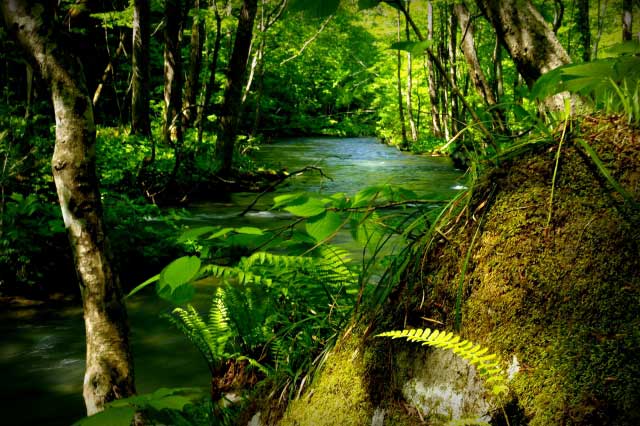
National Highway 103 is the road that follows Oirase Gorge in Aomori Prefecture
Scenic highlights and natural features
Oirase Gorge is renowned for its breathtaking scenery and unique natural features. The crystal-clear Oirase River is the star attraction, flowing through a beautiful deciduous forest and creating a symphony of rushing water and rustling leaves. Along the gorge, visitors will encounter numerous waterfalls, each with its own character and charm. Some of the most notable include:
- Soryu Waterfall (Two Dragon Waterfall)
- Choshi Otaki Falls (the largest waterfall in the gorge)
- Kumoi Falls (Well of Clouds)
- Shirakinu Waterfall (White Silk Waterfall)
- Tamadare Waterfall (Bead Curtain Waterfall)
In addition to the waterfalls, the gorge is marked by fascinating rock formations with evocative names such as Fudo Rock, Byobu Rock, Makado Rock, and Tengu Rock. These unique geological features add to the gorge's mystical atmosphere and provide excellent photo opportunities for visitors.
The diverse flora of Oirase Gorge is another highlight, with over 300 varieties of moss carpeting the forest floor and rocks. This lush green backdrop creates a fairy-tale-like setting, especially when viewed up close with a magnifying glass. The gorge is also home to a rich variety of trees, including Japanese beech, oak, maple, and white cedar, some of which are over 200 years old.
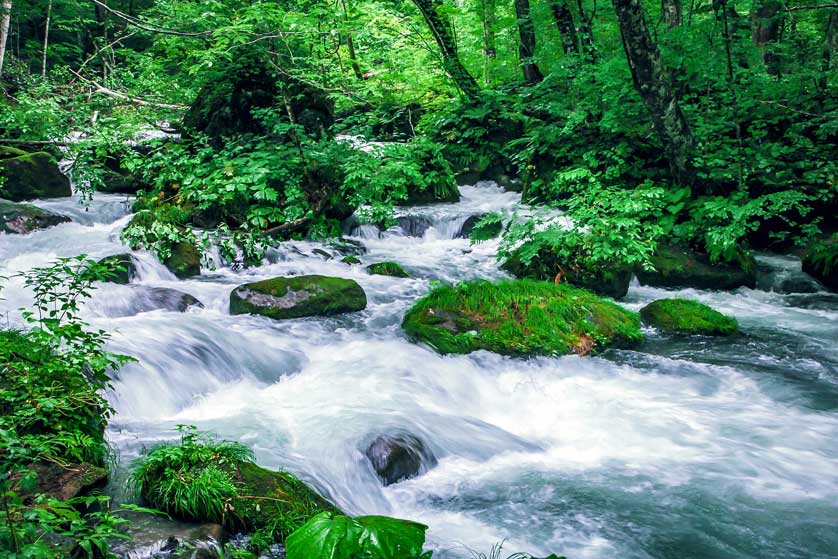
The Oirase Gorge and rapids near Lake Towada
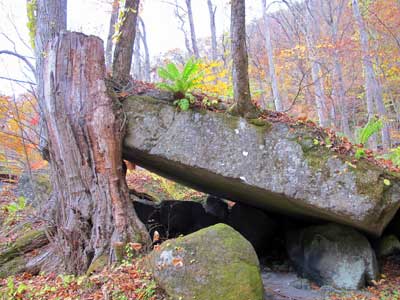
The Fudo or "Immovable Rock" at Ishikedo in Oirase Gorge is supported by just a single tree
Best ways to explore the gorge
There are several ways to experience the beauty of Oirase Gorge, catering to different preferences and fitness levels:
1. Hiking: The most popular and immersive way to explore the gorge is by walking the 14-kilometer trail that runs alongside the Oirase Stream. This relatively flat path is suitable for hikers of all abilities and takes about 4-5 hours to complete. Along the way, you'll have plenty of opportunities to stop and admire the waterfalls, rock formations, and lush forest scenery.
2. Cycling: For those who prefer to cover more ground, renting a bicycle is an excellent option. Several rental shops are available in the area, allowing you to pedal along the scenic road that runs parallel to the stream. This method offers flexibility and the chance to explore at your own pace.
3. Bus tours: If you're short on time or prefer a more comfortable journey, bus tours are available that make stops at key points of interest along the gorge. This option is particularly useful during inclement weather or for those with limited mobility.
4. Guided nature walks: To gain a deeper understanding of the gorge's ecosystem and history, consider joining a guided nature walk. Expert guides can provide fascinating insights into the flora, fauna, and geological features of the area.
5. Photography tours: For photography enthusiasts, specialized tours are available that focus on capturing the gorge's beauty through the lens. These tours often time visits to coincide with the best lighting conditions and most photogenic locations.

The Oirase Stream is a favorite with hikers from all over Japan.
Seasonal attractions and best times to visit
Oirase Gorge offers unique experiences throughout the year, with each season presenting its own charm:
Spring (April to June): As the snow melts and new life emerges, the gorge bursts into vibrant shades of green. This "shinryoku" or "new green" season is perfect for experiencing the fresh energy of nature. Cherry blossoms can be seen in late April, adding splashes of pink to the landscape.
Summer (July to August): The gorge provides a cool respite from the summer heat. The lush greenery is at its peak, and the increased water flow makes the waterfalls particularly impressive. This is an ideal time for hiking and enjoying the refreshing forest atmosphere.
Autumn (September to November): Autumn is arguably the most popular season to visit Oirase Gorge. The foliage transforms into a stunning tapestry of red, orange, and gold, creating a breathtaking backdrop for the rushing stream. The colors typically peak from late October to early November, drawing photographers and nature lovers from around the world.
Winter (December to March): While access can be limited due to snow, winter offers a unique perspective of the gorge. Many waterfalls freeze into dramatic ice formations, creating a magical winter wonderland. The snow-covered landscape provides a serene and peaceful atmosphere, perfect for quiet contemplation.
The best time to visit depends on your preferences, but late October to early November is considered the prime season due to the spectacular autumn colors. However, visiting during the less crowded periods can offer a more tranquil experience and the opportunity to appreciate the gorge's ever-changing beauty.
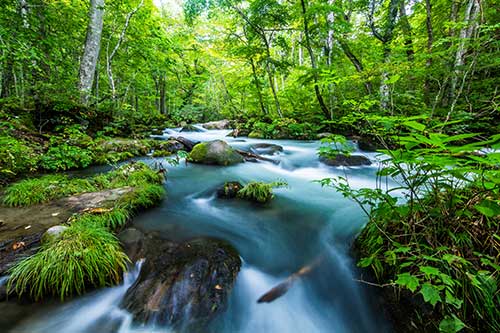
Oirase Gorge, Oirase River, Aomori, Tohoku, Japan
Practical information for visitors
Access: The most convenient way to reach Oirase Gorge is by taking a JR bus from either Aomori city or Shin-Aomori Station. The bus journey takes about 2 hours from Aomori Station or 50 minutes from JR Hachinohe Station. If you're driving, take National Highway 103 from Aomori city, which follows the Oirase Stream.
Best time to visit: The gorge is accessible from late April to early November. Bus services are suspended during winter months due to heavy snowfall.
Hiking tips: Wear comfortable, waterproof shoes as the trail can be slippery. Bring insect repellent, especially during summer months. While the trail is relatively easy, it's always good to carry water and snacks.
Facilities: There are rest areas and toilets along the trail, including the Ishigedo rest area at the center of the gorge. The Oirase Keiryu Hotel offers accommodations and dining options for those wanting to extend their stay.
Conservation: As a protected area, visitors are asked to follow Leave No Trace principles. Stick to marked trails and don't disturb the natural environment.
Nearby attractions and activities
While Oirase Gorge is a destination in itself, there are several nearby attractions worth exploring:
Lake Towada: At the end of the gorge, this beautiful caldera lake offers boat cruises, hiking trails, and scenic viewpoints. The Towada Prince Hotel provides lakeside accommodations.
Towada Shrine: Located near Lake Towada, this serene Shinto shrine is dedicated to the gods of the lake and offers a peaceful spot for reflection.
Tsutayacho Forest: A short drive from Oirase Gorge, this forest features several small, tranquil ponds perfect for nature walks and photography.
Hakkoda Mountains: For more adventurous hikers, the nearby Hakkoda mountain range offers challenging trails and stunning views.
Aomori City: The prefectural capital is worth a visit for its museums, including the Aomori Museum of Art, and its famous Nebuta Festival in August.
Conservation and environmental significance
Oirase Gorge is not just a beautiful landscape; it's also an area of significant ecological importance. The gorge is designated as a Special Place of Scenic Beauty and a Natural Monument of Japan, recognizing its unique geological and biological features. The diverse ecosystem supports a wide range of plant and animal species, some of which are rare or endangered.
The moss-covered forest floor plays a crucial role in the gorge's ecology, acting as a natural water filter and providing habitat for numerous microorganisms. The pristine waters of the Oirase Stream are home to various freshwater fish species and support the broader ecosystem of the region.
Conservation efforts are ongoing to protect this delicate environment from the impacts of tourism and climate change. Visitors can contribute to these efforts by following designated trails, properly disposing of waste, and respecting the natural surroundings. By preserving Oirase Gorge, we ensure that future generations can continue to experience its awe-inspiring beauty and learn from its rich natural heritage.
As you plan your visit to Oirase Gorge, consider how you can minimize your impact and contribute to the conservation of this extraordinary place. Whether you're capturing its beauty through photography, exploring its trails, or simply basking in its serene atmosphere, remember that you're experiencing one of Japan's most precious natural treasures. Watch this video to get a glimpse of what awaits you in this enchanting gorge.
